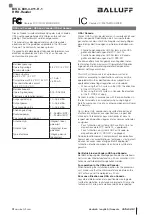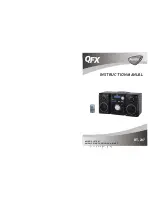
Advanced commissioning
7.11 Motor control
SIMATIC ET 200pro FC-2 converter
158
Operating Instructions, 04/2018, FW V4.7 SP10, A5E34257324B AF
If the motor exhibits the following response, the speed control is well set and you do not
have to adapt the speed controller manually:
The speed setpoint (broken line) increases with the set ramp-
up time and rounding.
The speed actual value follows the setpoint without any over-
shoot.
Control optimization required
In some cases, the self optimization result is not satisfactory, or self optimization is not
possible as the motor cannot freely rotate.
Initially, the speed actual value follows the speed setpoint
with some delay, and then overshoots the speed setpoint.
First, the actual speed value increases faster than the speed
setpoint. Before the setpoint reaches its final value, it passes
the actual value. Finally, the actual value approaches the
setpoint without any significant overshoot.
In the two cases describe above, we recommend that you manually optimize the speed
control.
The most important parameters
Table 7- 29 Encoderless speed control
Parameter Description
p0342
Moment of inertia ratio, total to motor (factory setting: 1.0)
p1496
Acceleration precontrol scaling (factory setting: 0 %)
For the rotating measurement of the motor data identification the inverter sets the
parameters to 100 %.
p1452
Speed controller speed actual value smoothing time (without encoder) (factory setting:
10 ms)
p1470
Speed controller operation without encoder P gain (factory setting: 0.3)
p1472
Speed controller operation without encoder integral action time (factory setting: 20 ms)
Optimizing the speed controller
Requirements
●
Torque precontrol is active: p1496 = 100 %.
●
The load moment of inertia is constant and independent of the speed.
















































